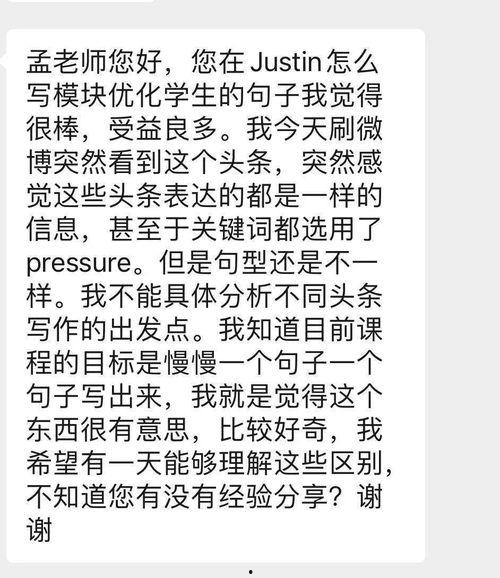Hey there, curious reader! Ever wondered how those eye-catching headlines you see on your newsfeed are called in English? Well, you're in for a treat because today, we're diving into the fascinating world of news headlines and how they're crafted in the English language. So, let's get our pens and notepads ready and unravel the secrets behind those captivating words that make us stop and read.
The Power of a Headline: A Brief Introduction

Before we dive into the nitty-gritty of how to say \news headline\ in English, let's take a moment to appreciate the power of a headline. A well-crafted headline can make or break a story. It's like the gatekeeper of your newsfeed, deciding whether you'll click on a story or scroll right past it. So, how do you say \news headline\ in English? It's quite simple, actually. You just say \news headline.\
The Evolution of News Headlines

Now, let's take a quick journey through time and explore how news headlines have evolved. Back in the day, headlines were often straightforward and to the point. They were like the old-school, no-nonsense kind of news that kept you informed without any fancy frills. But as the world became more complex, so did the headlines. Today, they're like a mix of poetry, psychology, and a dash of drama.
Types of News Headlines

There are various types of news headlines, each serving a different purpose. Let's take a look at some of the most common ones:
1. Direct Headlines: These are straightforward and to the point. They simply state the facts of the story. For example, \President Visits Paris for Historic Summit.\
2. Declarative Headlines: These headlines make a bold statement or claim. They're designed to grab your attention and make you curious. For example, \Breaking News: Earthquake Hits California.\
3. Question Headlines: These headlines pose a question to engage the reader. They're like a little hook that makes you want to find out the answer. For example, \Who Is Behind the Recent Cyber Attacks?\
4. Hyperbolic Headlines: These headlines use exaggerated language to create a sense of urgency or drama. They're like the drama queens of the news world. For example, \World on the Brink of Nuclear War!\
5. Anatomical Headlines: These headlines use parts of the body to describe the story. They're a bit quirky and can be quite memorable. For example, \Heartbreaking Story of a Lost Soldier.\
Crafting the Perfect News Headline
Now that we've explored the types of news headlines, let's talk about how to craft the perfect one. Here are some tips to keep in mind:
1. Be Clear and Concise: Your headline should give readers a clear idea of what the story is about. Avoid using jargon or technical terms that might confuse your audience.
2. Use Keywords: Incorporate relevant keywords to make your headline more searchable and appealing to readers.
3. Create a Sense of Urgency: Use words that evoke a sense of urgency or curiosity to make your headline stand out.
4. Avoid Clickbait: While it's tempting to use clickbait headlines to boost your readership, it's important to maintain integrity and provide accurate information.
5. Test Different Versions: Experiment with different headline variations to see which one resonates best with your audience.
The Importance of News Headlines
News headlines play a crucial role in shaping public opinion and informing the masses. They're like the first impression of a story, and a good headline can make all the difference. By using the right words and techniques, you can create headlines that not only capture attention but also provide valuable information.
Conclusion
So, there you have it, the lowdown on how to say \news headline\ in English and a glimpse into the fascinating world of news headlines. Remember, the next time you see a captivating headline, take a moment to appreciate the art and science behind it. And who knows, you might just find yourself clicking on a story you never would have otherwise!
转载请注明出处:admin,如有疑问,请联系()。
本文地址:https://hnskjx.com/post/454.html
